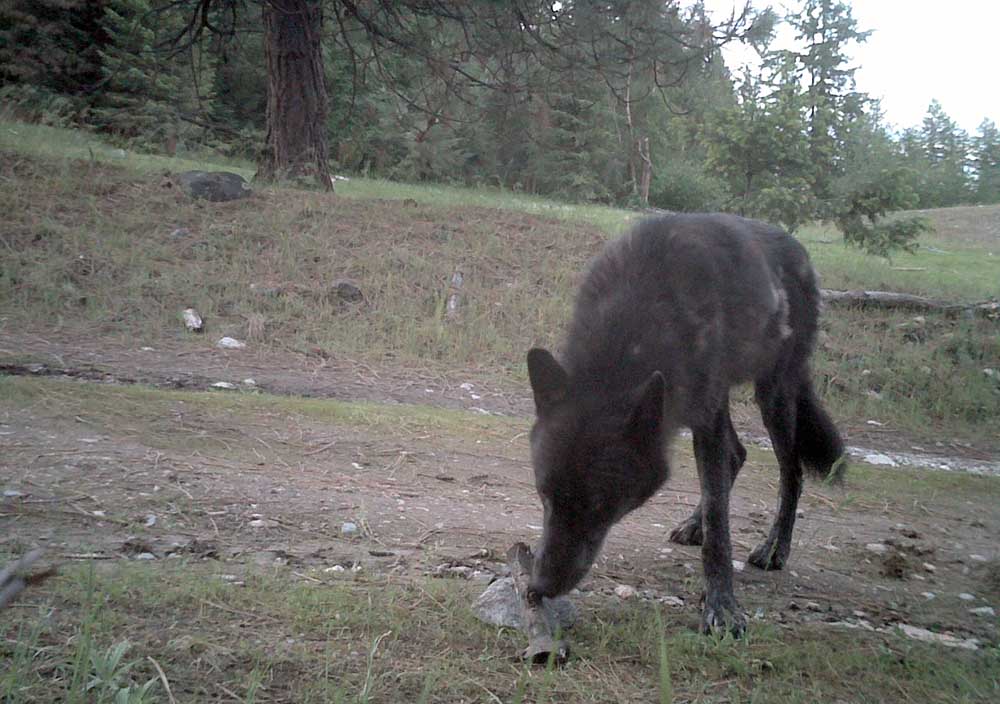Washington wolfpack kills seventh cow. Now what?
Published 4:00 pm Tuesday, July 9, 2019

- State wildlife officials say they want to cull a wolfpack in northwestern Washington.
A Washington wolfpack with a history of attacking cattle in the Colville National Forest has been blamed for killing another cow, pushing Fish and Wildlife Director Kelly Susewind into having to decide whether to restart lethal control.
The department reported Tuesday that it found the carcass Saturday while monitoring the OPT pack in northeast Washington. The cow was mostly eaten, but enough remained to see wolf bites.
Fish and Wildlife investigators also found wolf tracks. Data from GPS-collars showed the OPT pack was in the area at the time investigators estimated the cow died.
Fish and Wildlife said Susewind was considering how the department will respond. The same rancher lost cattle to the pack last year and in previous years.
In holding depredations against a pack, the department goes back 10 months. The pack has killed seven and injured 13 cattle since Sept. 5. Before Saturday, the most recent depredations had been three in early January.
In response to the depredations in September, Fish and Wildlife killed a juvenile wolf and adult female.
The pack continued to attack cattle, and the department in October searched for the pack’s two known survivors, a juvenile and a male fitted with a GPS collar. The department could not find the juvenile, and did not want to shoot the wolf with the collar, making the pack even harder to find.
With cattle moving off the range for the winter, Susewind suspended the operation Nov. 13.
Packs in the Kettle River Range have broken up and reformed, with the department assigning different names. The department culled seven wolves there in 2016, one in 2017 and two last year.
Environmentalists have said they’re frustrated by the annual lethal-removal operations. Livestock representatives note the department has never removed the entire pack, leaving behind wolves that are or become accustomed to preying on cattle.
Even after two pack members were killed last fall, the OPT pack is a large one. In the winter, the department counted four wolves. Recent photos from a trail camera show there may be a fifth adult.
The pack also has at least four pups, according to the department.
A Thurston County judge last year got Fish and Wildlife to agree to give one-day notice before searching to kill wolves. The delay gives environmental groups the chance to seek a court order stopping the shootings.
In a possible prelude to defending lethal removal in court, Fish and Wildlife on Tuesday detailed what the department, cattlemen and the Forest Service have done to protect the herd from the OPT pack.
The rancher delayed releasing livestock onto the Forest Service allotment until June 15, rather than the usual June 1. By delaying the turnout, calves are larger. Also, fawns, and elk and moose calves became available as prey in mid-June, according to Fish and Wildlife.
Once on the allotment, the cattle were diverted from sites where wolfpacks had gathered in previous years, according to the department.
The cattle have been grouped around two salting sites and one watering site. The salting sites are picked by the Forest Service and have been used historically, according to Fish and Wildlife.
Even if salt blocks were moved, the cattle would be familiar with the site and drawn to salt in the ground, according to Fish and Wildlife.
Starting on June 17, the rancher, a Ferry County sheriff’s deputy and Fish and Wildlife coordinated nearly daily patrols. The department contracts with a range rider to watch the cattle.
The range rider was within the OPT territory, but on the other side of the Kettle crest and east of where the cow was attacked, according to Fish and Wildlife.






